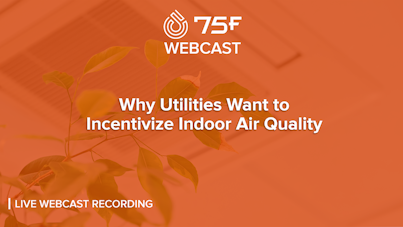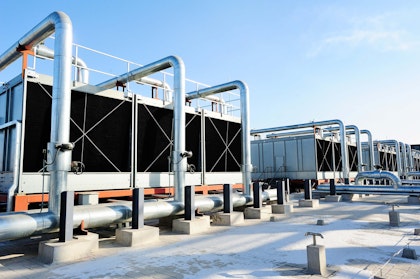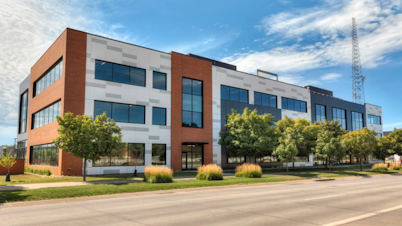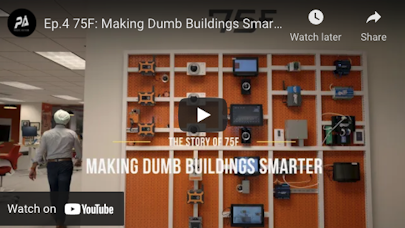
How Schools can Finance HVAC Projects During COVID-19
Of all the COVID-19 mitigation strategies recommended for school building operations, perhaps none are more important than proper ventilation. That’s why a June 2020 study from the Government Accountability Office (GAO) is revealing for schools looking to follow expert guidelines on ventilation during a pandemic this 2020-21 school year.
According to the study, a considerable 41 percent of school districts in the U.S. need to update or replace HVAC systems in at least half of their buildings. This number does not take private school buildings into consideration.
While the GAO did not conduct this study for the purpose of COVID-19, it does demonstrate that thousands of schools in this country are perhaps not equipped to follow reopening guidelines for increased outdoor air (OA) ventilation from standard-setters like the Centers for Disease Control and Prevention (CDC) and the American Society for Heating, Refrigerating, and Air-conditioning Engineers (ASHRAE).
Schools leaders burdened by underfunding should know there are ways to responsibly finance HVAC upgrades and control systems that will make their school buildings safer for educators and students now, and also reduce building OpEx in the long run.
Why Ventilation Matters in Schools Now and the Years to Come
Medical experts from trusted organizations such as the CDC say person-to-person contact is the main culprit for COVID-19 transmission. This usually happens between people in close contact — about six or eight feet — through droplets expelled when an infected person coughs, sneezes, yells, or even speaks normally. In recent weeks, however, medical researchers have been stressing the prevalence of airborne transmission, indicating the virus may also spread via smaller droplets that stay afloat in the air for much longer.
To combat airborne transmission, the CDC and ASHRAE recommend schools and other buildings make sure, first and foremost, that their ventilation systems are working properly. Beyond this, experts recommend increasing the rate of OA ventilation as high as equipment capacity and the weather will allow. 75F has covered OA ventilation guidelines in detail through our Healthier Buildings webcast series. Visit our webinar library to access our free recordings.
For many schools, implementing this guidance is easier said than done, especially considering the GAO study on how many schools need to upgrade or replace their HVAC systems altogether.
Facility managers have labor, equipment capacity and project scale to consider, plus extreme weather conditions and increased energy costs that come with higher OA ventilation. Yet, COVID-19 cases continue to increase as flu season approaches, and the importance of school buildings with strong IAQ is hard to ignore. So, how can schools overcome funding roadblocks for HVAC control systems and upgrades?
It’s no secret that schools need funding for building upgrades as we navigate COVID-19. Check with your school board or leaders to learn how state and federal government grants can help you finance HVAC upgrades if you need them.
Grant programs do exist for this purpose — take this program in Vermont, for example, or this low-interest loan program for schools investing in efficiency.
Using Rebates and Incentives to Fund HVAC Controls & Upgrades
Utility providers often offer rebate and incentive programs for projects that will make your building more energy efficient. But, what do efficiency upgrades have to do with COVID-19 and ventilation?
Building control systems are a rebate category because they can lower a facility’s total energy costs by a considerable amount. Building automation systems achieve this by predictively and proactively controlling your HVAC and lighting based on data from your space, equipment, and the weather. Savings can also come from remote setpoint configurations that allow you to reduce heating or cooling requirements overnight, on weekends, or extended periods of time such as holiday breaks.
Incidentally, these same control capabilities can also help schools follow CDC and ASHRAE guidelines on increased outdoor air ventilation without breaking the bank.
If you have a cloud-enabled controls system, facility managers can implement a sequence that will open your buildings’ OA dampers based on factors like equipment type, capacity, and the weather, lowering risk of equipment damage and saving your facility manager from manually opening dampers on every roof.
75F’s Epidemic Mode control sequence automates this, as well as schedules purges to replace stale indoor air with fresh outdoor air before and after students occupy the building. The 75F solution is also ideal for schools running a hybrid model because control sequences can direct increased ventilation to occupied spaces, saving valuable energy by not targeting empty classrooms or lunch halls. Once the pandemic is under control, school facility managers can turn Epidemic Mode off with the click of a few buttons and return to standard energy-saving algorithms.
Using utility rebates and incentives to invest in building controls can help you prioritize IAQ now, and efficiency in the long run. Check with your utility provider to evaluate the options available for your school — with grants and incentives, upgrading your HVAC system doesn't have to be so daunting.











